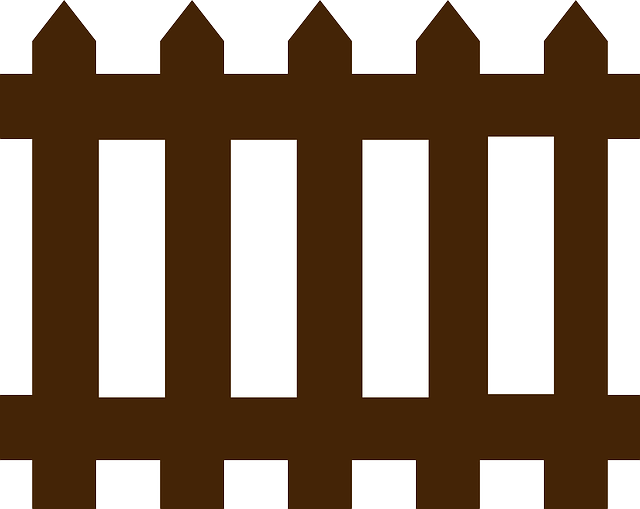Large properties present unique challenges when it comes to fencing, demanding solutions that balance durability, aesthetics, and affordability. This article explores cost-effective fencing options tailored for extensive landholdings, delving into the intricate needs of such spaces. We’ll compare traditional fencing methods with innovative alternatives, highlight durable materials ensuring longevity, offer creative design insights to boost property value, provide installation guidance for DIY enthusiasts and professionals, and share maintenance strategies to maximize fence lifespan.
- Understanding Large Property Fencing Needs
- Traditional Fencing vs Cost-Effective Solutions
- Durable Materials for Long-Lasting Fences
- Creative Designs to Enhance Property Value
- Installation Tips for DIY and Professional Projects
- Maintenance Strategies for Optimal Fence Lifespan
Understanding Large Property Fencing Needs
Fencing large properties presents unique challenges compared to smaller plots. The primary consideration is durability and security, especially in rural or remote areas where properties often span vast acres. High-quality fencing materials that can withstand harsh weather conditions and potential wildlife intrusion are essential. Additionally, these fences should be designed with accessibility in mind; gates and entry points are crucial for property management and emergency access.
Another factor to consider is aesthetics, as many homeowners wish to enhance the curb appeal of their properties while still achieving effective security. Customized fencing designs, incorporating natural materials or modern styles, can blend seamlessly with the landscape while providing the necessary barriers. This balance between functionality and visual appeal offers a cost-effective solution for large property owners seeking to secure their spaces without compromising on beauty.
Traditional Fencing vs Cost-Effective Solutions
In the realm of property enclosure, traditional fencing has long been the go-to option for many homeowners and landowners. These conventional fences, often made from wood or metal, offer a sense of security and privacy but come with a considerable financial burden. The materials and labor required to install such fences can be expensive, especially for large properties that demand extensive perimeter coverage.
Cost-effective fencing solutions, on the other hand, present a modern approach to property boundaries. These innovative options include vinyl, chain link, or even fabric barriers, which are not only more affordable but also durable and low maintenance. Such alternatives provide just as much security while offering flexibility in design and customization, catering to various aesthetic preferences and budget constraints for large-scale projects.
Durable Materials for Long-Lasting Fences
When considering fencing solutions for large properties, opting for durable materials is a strategic choice to ensure longevity and minimize maintenance costs over time. Modern fencing options are now available in various materials, each offering unique advantages. For instance, high-density polyethylene (HDPE) and polyvinyl chloride (PVC) are popular choices due to their resistance to rot, corrosion, and damaging UV rays. These materials are often used for vinyl fences, providing an attractive, low-maintenance option that can withstand the elements for decades with minimal deterioration.
Another durable material worth considering is steel, particularly galvanised steel fencing. Galvanisation offers excellent corrosion protection, making it ideal for coastal areas or properties prone to harsh weather conditions. Steel fences are known for their strength and ability to resist heavy impact, making them a secure option for large properties. Additionally, steel can be crafted into various designs, from traditional styles to modern, artistic patterns, offering both functionality and aesthetic appeal.
Creative Designs to Enhance Property Value
Fencing is no longer just about functionality; it’s an art form that can significantly enhance a property’s curb appeal and value. Creative designs offer an opportunity to transform a mundane boundary into an eye-catching feature. For instance, instead of traditional straight lines, consider curved or zigzag patterns that follow the natural contours of the land. These unique designs not only add visual interest but also create a sense of movement and depth, making the property feel more dynamic and inviting.
Integrating fencing with landscaping is another innovative approach. Living fences using hedges or vines can provide both privacy and an organic aesthetic. Arched gates and decorative posts adorned with intricate carvings or sculptures can serve as stunning entry points. These creative elements not only boost the overall look of a property but also create opportunities for memorable first impressions, making your home stand out in the neighborhood.
Installation Tips for DIY and Professional Projects
When installing fencing on a large property, whether as a DIY project or hiring professionals, several tips can ensure a job well done. First, plan your fence layout and choose materials that align with your budget and desired aesthetic. Wood, vinyl, and chain-link fences are popular choices for large properties, each offering unique benefits in terms of durability, maintenance, and cost.
For DIY installations, prioritize clear measurements, accurate cuts, and proper post-hole digging to ensure stability. Consider seeking advice from local hardware stores or online tutorials for specific installation techniques. In contrast, professional installers bring expertise, ensuring your fence meets safety standards and offers long-term resilience against the elements. They can also provide valuable insights into landscape design, integrating the fence seamlessly with your property’s natural features or architectural style.
Maintenance Strategies for Optimal Fence Lifespan
Regular maintenance is key to extending the lifespan of any fence, especially on large properties where the investment can be substantial. A simple cleaning routine that includes brushing and sweeping to remove built-up dirt and debris is an excellent starting point. This prevents the accumulation of moisture, which can lead to rust or rot in metal fences or weaken wooden posts over time.
For more robust maintenance, consider inspecting your fence at least twice a year for any signs of damage or wear. Repairs should be addressed promptly; fixing broken rails or panels and replacing missing or damaged pickets ensures the fence remains secure and aesthetically pleasing. Using high-quality fencing materials and choosing suitable treatments, such as pressure washing or applying water-repellent coatings, can also contribute to long-lasting performance and reduce future maintenance needs.
